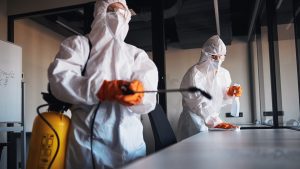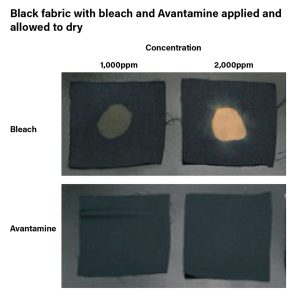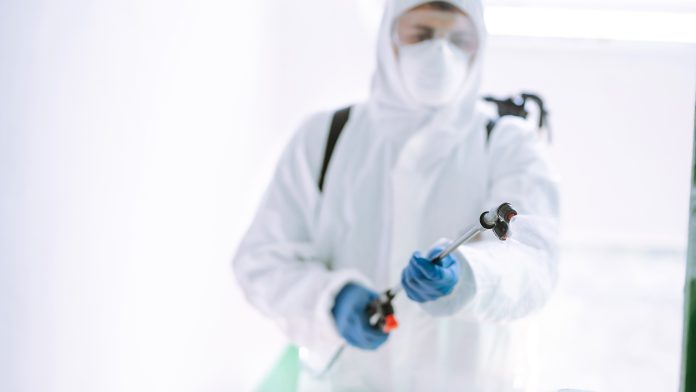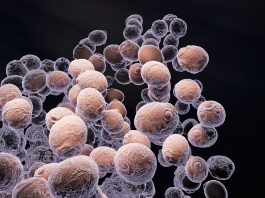Avantamine is a revolutionary biocide that combines the pathogen-killing power of chlorine while avoiding the drawbacks of bleach, making it an effective, safe, and versatile solution for pandemic preparedness and infection control.
In the fight against dangerous pathogens such as Candida auris, bird flu, Ebola, and the ever-evolving, unknown threats that lie ahead, the world needs a revolutionary solution that combines efficacy with safety without resistance generation concerns. Enter Avantamine – the new ‘go-to’ for pandemic preparedness and infection control.
Historically, during infectious disease outbreaks like the COVID-19 pandemic, the World Health Organization (WHO) and the Centers for Disease Control and Prevention (CDC) have recommended using bleach as the default biocide. Bleach, or sodium hypochlorite, is universally known for its ability to kill all pathogens – bacteria, viruses, and fungi.
However, bleach has significant downsides, including quick neutralisation by dirt/organic matter, a short lifetime after application, and corrosion of surfaces and irritation of skin.
Now, imagine a product that possesses the microbial-killing power of bleach, yet avoids these issues entirely. Imagine Avantamine.
The power of Avantamine
Avantamine essentially stabilises chlorine, the active element in bleach, to preferentially target pathogens. The stabilisation has a dramatic effect, minimising the disadvantages while retaining the killing power of Avantamine. In essence, if chlorine was a sword, Avantamine would be a sheath that contains the deadly potential until a pathogen is present.
In the same way that antibiotics target some aspect of a pathogen’s metabolism, Avantamine preferentially targets the negatively charged pathogen cell wall over the positively charged human cell membrane.
At normal use concentrations, Avantamine will not bleach fabric, corrode metals or degrade plastics, and be effective after use, all while not irritating skin.
A smart evolution of immune support
The safety and biocompatibility of Avantamine should not be a surprise since Avantamine is inspired by the human immune system. Our white blood cells take chlorine from salt in our bodily fluid and an amino acid called taurine to create taurine chloramine. Taurine chloramine, like bleach, is a powerful chlorine-based biocide our bodies use to eliminate viruses, bacteria and fungi.¹
While taurine chloramine and Avantamine share chloramine-based chemistry, only Avantamine can be packaged and used effectively in products, ensuring it’s always ready when needed most.
Beyond killing: A holistic approach to health
Also of significance, taurine chloramine is not only known as a bio-compatible biocide, taurine chloramine is considered anti-inflammatory and has been evaluated for efficacy against skin conditions like atopic dermatitis, psoriasis, and pruritis.²
Taurine chloramine is made by combining taurine with hypochlorous acid. Hypochlorous acid is currently being sold for skin care to reduce itching and, at higher concentrations than commercially available, has been evaluated favourably in an animal model against a prescription drug for atopic dermatitis.³ With Avantamine, the possibility of improving skin health alongside infection control could be a new reality.
Both effective and safe for surfaces
Preparedness means being ready for any occasion, including worst-case scenarios like mass casualty events or operating in forward areas during wartime. A lightweight, portable foil packet of Avantamine granules has a long shelf-life even in harsh conditions and can be mixed with potable water to create sterile water or sterilise surgical instruments and other medical devices in ten minutes. Even at this high concentration, Avantamine does not corrode stainless steel or degrade plastics.
Adding more water turns Avantamine into a non-corrosive disinfectant that can keep all surfaces pathogen-free. Avantamine can also quickly destroy biofilms made by bacteria and fungi. The low corrosion enables Avantamine to be used at higher concentrations compared to other chlorinated biocides without damaging surfaces, bringing the full power of chlorine to bear on pathogens.

The unusually high stability that keeps the chlorine bound to Avantamine reduces the likelihood that Avantamine is neutralised by random organic matter and also enables long-term residual disinfection. About 90% of the chlorine in an Avantamine solution will still be actively protecting against pathogens for a week after drying on a surface. About 70% of the chlorine remains on the surface for four weeks.
Even when a solution is wiped off until no Avantamine appears to remain, there is still enough chlorine to reduce 99% of pathogens using the EPA supplemental residual antimicrobial coating efficacy test. If the surface is not wiped off, Avantamine can easily pass EPA testing to be called a residual disinfectant against gram positive and gram negative bacteria as well as fungi.
Both effective and safe for skin
At all concentrations, to sterilise, disinfect, or sanitise, Avantamine is not considered a skin irritant – a truly unique feature. That means that after using Avantamine to disinfect surfaces, that same solution can be used on the skin as a hand sanitiser, pre-operative antiseptic, or even wound cleaner. Avantamine as a skin antiseptic has advantages over the three most prominent chemistries for antiseptic use: alcohol dries skin, iodine yellows skin, and chlorhexidine is not safe for long-term use.⁴
What is more, in vivo testing of Avantamine shows better efficacy over traditional topical antifungal treatments against fungal skin infections, including ringworm, jock itch and athlete’s foot.

There is even the potential that Avantamine could be used in a nasal spray to kill viruses in sinus cavities as a prophylactic or to reduce symptoms of COVID, flu, anthrax or even the common cold.⁵ There are hundreds of potential uses of Avantamine that only depend upon matching the concentration to the need.
Ready for the next outbreak
AvantGuard believes the next major struggle against emerging infectious diseases will be against Candida auris, which has reached >50 countries and has a 40% mortality rate in 30 days as an invasive infection.⁶ While current antiseptics fail to adequately remove C. auris from the skin and struggle to remove C. auris from surfaces,⁷ Avantamine offers a solution that is both effective and safe – a game-changer for public health preparedness.
In conclusion
The WHO and CDC have long endorsed bleach as a crucial element in the global fight against infectious diseases. Avantamine represents the next generation of bleach and biocides in general – delivering broad-spectrum efficacy comparable to bleach but with lasting protective qualities and unmatched safety for humans and the environment.
As we prepare for the unpredictable challenges posed by both known and unknown pathogens, Avantamine stands out as the best solution. It is time to redefine preparedness – one safe application at a time.
References
- Gottardi W, Nagl M. N-chlorotaurine, a natural antiseptic with outstanding tolerability. Journal of antimicrobial chemotherapy 2010;65(3):399-409.
- Kim C, Cha Y-N. Taurine chloramine produced from taurine under inflammation provides anti-inflammatory and cytoprotective effects. Amino Acids 2014;46:89-100.
- Fukuyama T, Ehling S, Wilzopolski J, Bäumer W. Comparison of topical tofacitinib and 0.1% hypochlorous acid in a murine atopic dermatitis model. BMC Pharmacology and Toxicology 2018;19(1):1-8.
- FDA. FDA warns about rare but serious allergic reactions with the skin antiseptic chlorhexidine gluconate. Web: Drug Safety Communications; 2017.
- Gutiérrez García R, La Cerda Angeles D, Juan C, et al. Nasopharyngeal and oropharyngeal rinses with neutral electrolyzed water prevent COVID-19 in front-line health professionals: A randomized, open-label, controlled trial in a general hospital in Mexico City. Biomedical Reports 2022;16(2):1-8.
- Lionakis MS, Chowdhary A. Candida auris Infections. New England Journal of Medicine 2024;391(20):1924-1935.
- Elbahr U, Khairy A, Dayyab F, et al. Can daily bathing with 4% chlorhexidine+ daily chlorhexidine wipe for 1 week be effective in decolonizing Candida auris colonization? European Journal of Clinical Microbiology & Infectious Diseases 2024;43(2):243-247.
Please note, this article will also appear in the 22nd edition of our quarterly publication.








